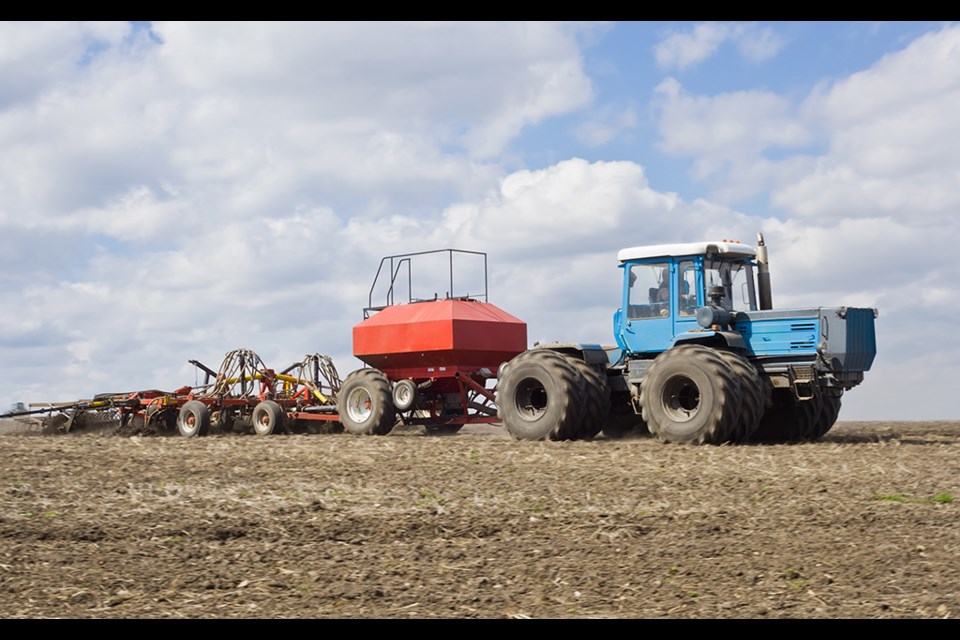SOUTHEASTERN SASKATCHEWAN CROP REGION — More and more producers in the Â鶹ÊÓƵeastern Saskatchewan crop region have been able to get into their fields and begin their seeding operations, mainly in the west half of the region. Seven per cent of the crop is now in the ground which is well behind the five-year average (2017-2021) of 27 per cent. Producers in the east half of the region are waiting for their fields to dry out enough so they can begin their seeding and spraying operations.
A large weather system moved through the region over the past week bringing with it some significant amounts of rain in some areas. The Bienfait area received 46 mm, the Outram and Redvers areas 32 mm and the Moosomin and Tantallon areas received 28 mm. This rain will continue to improve topsoil moisture and refill dugouts, but it will also cause further delays to many producers.
The recent precipitation has greatly improved the topsoil moisture conditions for much of the region, especially the far southeast corner around the Carnduff area. Cropland topsoil moisture is rated as 16 per cent surplus, 76 per cent adequate, six per cent short and two per cent very short. Hay and pastureland is rated as four per cent surplus, 77 per cent adequate, 17 per cent short and two per cent very short. The recent rain will help pastures grow rapidly and fill dugouts.
There is not much field activity due to wet field conditions, most of the work is being done in the west half of the region where seeding and spraying is underway.
Provincial Overview: Slow progress
Seeding progress is still slower than average but more producers were able to get out over the past week. Provincially, 14 per cent of crops are now seeded, up from one per cent last week and behind the five-year average (2017-2021) of 23 per cent. Crops that were seeded over the past two weeks should be emerging if moisture conditions are favourable. In areas of the southwest and west-central regions where conditions are very dry, germination could be uneven.
The southwest region has 34 per cent of their crop seeded, followed by 20 per cent in the west-central, seven per cent in the southeast, five per cent in the northwest, three per cent in the east-central and one per cent in the northeast. Many fields in the eastern half of the province are still too wet to allow producers to seed, full-scale seeding is still a week away in some parts of the province.
Various amounts of precipitation were received across the province; this rain is needed badly in some areas that are too dry for proper germination. However, it will likely lead to longer delays in areas of the eastern regions where moisture is already high. The most rain reported was in the Pelly area with 49 mm, followed by 46 mm in the Bienfait area. The Shaunavon area received 26 mm and the Hazenmore area received 18 mm, which is good to see in the southwest since much of the crop is already in the ground and moisture has been limited in the region.
Due to widespread precipitation across the province, topsoil moisture has slightly improved from last week's report. Cropland topsoil moisture is rated as six per cent surplus, 58 per cent adequate, 26 per cent short and 10 per cent very short. Hay and pastureland moisture is rated as two per cent surplus, 56 per cent adequate, 29 per cent short and 13 per cent very short. This increase in moisture will help pastures grow rapidly.
Many livestock producers have reported that the recent rain helped fill their dugouts and they feel confident that, for the time-being, water quality shouldn't be an issue. However, producers in the southwest and west-central have concerns about water levels and are making plans to haul water if conditions do not improve. Heavy rains throughout the summer will be needed to ensure that water availability does not become a widespread concern.
Producers continue working in their fields seeding, harrowing, rock-picking and rolling. When the weather allows, producers are spraying and seeding. Producers are reminded to be safe during their field activities and when transporting equipment across or alongside roadways. When working in extremely dry areas, especially pastures, ensure sparks or any other fire starter is controlled and a water source is available.




